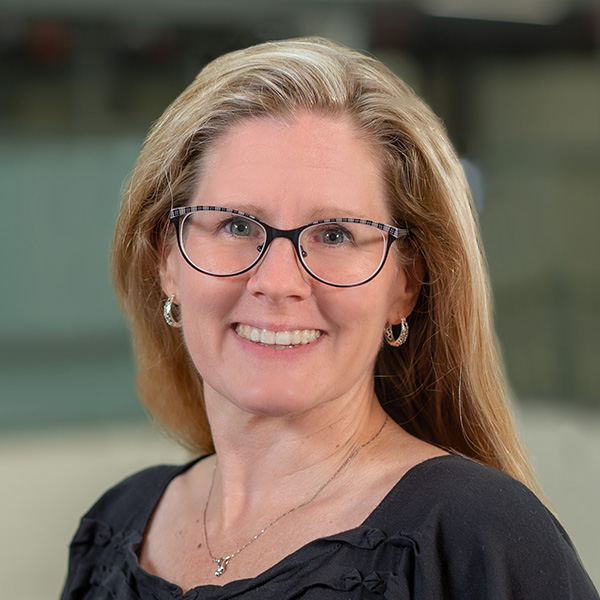Senior Advisor and Research Fellow Dubravka Ritter is interested in how consumer credit markets influence economic opportunity, mobility, and equality. She joined the Philadelphia Fed’s Consumer Finance Institute in 2011 and primarily studies how students and governments pay for postsecondary education. Most recently, she’s turned her research lens to exploring the effects of high student loan burdens, student loan repayment plans that tie payments to borrower incomes, and the recent student loan payments pause.

how students and governments
pay for postsecondary education.
In this Q&A, we sat down with Dubravka to learn more about what that research revealed and what topics she may explore next.
Q: The Consumer Finance Institute (CFI) studies how people earn, spend, save, and invest, as well as how credit markets and payment systems affect the economy. How does higher education finance fit into this, and why study that area?
DR: Higher education is important to the economy because it prepares the workforce for jobs, and for many students, it provides a pathway to the middle class. According to the National Center for Education Statistics (NCES), each year, roughly 20 million students are enrolled in postsecondary programs across the United States. The sector employs more than 3 million staff, and total expenditures per full-time student amount to 2.5 percent of U.S. GDP.
But how students afford higher education is also very important. The cost of college is paid for by the government, philanthropic organizations, and students and their families. Financial aid, when available, helps offset costs, but a large percentage of families finance postsecondary education with loans. For most students, the financial returns on postsecondary education justify the costs. But this is not true for some students, especially if they borrowed to attend college but did not complete their degree.
The ways in which higher education is paid for and how this affects the financial health of households, the higher education sector, and other parts of the economy is incredibly important to the CFI’s work and in my personal research agenda.
Q: The COVID-19 pandemic, the widespread opportunity to pause student loan payments, and several other factors have brought student debt to the forefront of discussion. In your research, what did you learn about borrowers’ experiences with student loan forbearance?
DR: Since 2020, the CFI has been collecting data on borrower experiences with student loans during the forbearance as part of our surveys. It’s one of the main benefits of our consumer surveys — we can take the pulse of what people are experiencing, practically in real time. Recently, we explored borrowers’ perspectives in a four-part report series. The first report examined borrowers’ expected capacity to make payments once they resumed and reasons for missed payments. The second looked at those who were able to make extra, lump-sum payments toward the end of the payment pause. And the third and fourth reports investigated how aware borrowers were of newly introduced payment plans and whether or how they expected to adjust their budgets as payments resumed, respectively.
We found that federal student loan borrowers are a diverse group with vastly different approaches to managing their student loan payments. Many borrowers were able to resume payments as the pause came to an end. Others were disconnected from student loan repayment for an unprecedented three-and-a-half years and expected to struggle with making payments. Many of those borrowers also struggled with making payments prior to the pandemic forbearance.
Q: You examined how aware student loan borrowers were of the Saving on a Valuable Education (SAVE) income-driven repayment (IDR) plan and how likely they were to apply. What did you find?

of survey respondents to apply for the SAVE plan.
DR: In November 2023, when our data were collected, at least one-third of borrowers said they were not aware of the latest reduced-payment student loan plan, or the SAVE plan. Once we explained the plan’s features and eligibility criteria to the borrowers we surveyed, 32 percent said they intended to apply. Another 40 percent said they would not apply, with the most common reasons given that SAVE was not affordable for them or they were hesitant to potentially extend the loan term.
Interestingly, one-third of borrowers were still unsure after our explanation, which tells us that borrowers need repeated, personalized outreach to truly understand whether a potentially helpful but quite complicated tool like the SAVE IDR plan might make sense for them.
Q: One of the reports focused on borrowers’ expectations for how they might adjust their household budgets once student loan payments resumed. What did you learn?
DR: We found that consumers expected to adjust their budgets in many ways when their finances changed with resumed payments. Borrowers said they did not expect to simply cut savings or discretionary spending, as many suspected they would. Surveys that ask only about one or two possible budget categories don’t capture the full menu of decisions borrowers expect to make.
One of our key findings was that the average consumer expected to borrow more and save less, even though they also expected to earn more. Consumers didn’t expect to change their overall spending considerably, but they did expect to shift their spending from discretionary to more essential items. To summarize: Borrowers expected to compensate for the increase in monthly student loan payments largely by increasing their income, borrowing more, and saving less — not by cutting their total spending.
Other groups of borrowers that were not directly affected by the pause also adjusted their budgets, although to a lesser extent. We concluded that other factors were likely also influencing household budgets, such as inflation and the economy at large.
Q: Financial aid is essential for low- and moderate-income households to afford college costs. In your research, you found that the financial aid process disadvantages some groups. Can you explain this finding and why is it important to consider?
DR: Eligibility for federal financial aid is determined, in part, using a formula that calculates how much each family is expected to contribute to college expenses, based on family composition, income, and assets. In the 1990s, some assets were excluded from the formula, including equity in the family’s primary residence (the home’s market value minus what is owed on the property), as well as tax-advantaged retirement savings like 401(k) accounts. Since then, households that hold those assets — mostly middle- to upper-income White families, according to our research — have been expected to contribute less toward college expenses than they would have before the legislation was amended.
Through our research, we estimated that almost 1 million students have access to roughly $2 billion in scholarship money each year that otherwise would not be available if their total household wealth was considered. The findings of this research raise important questions for policy makers and colleges: Is the formula for calculating a family’s eligibility for financial aid consistent with the objectives of federal programs to help families afford a college education? If not, how could the formula be adjusted to further optimize financial aid disbursement?
Q: Are there additional topics in higher education finance that you have explored in the past or have interest in exploring in future?
DR: The CFI continues to be on the forefront of exploring how the higher education sector is evolving. For example, we hosted a forum in 2022 to discuss the risks and opportunities of increasingly prevalent certificates and other nondegree credentials. And we’ve continued to study novel ways of funding postsecondary education, such as income-contingent student loans, along with a host of other topics.
As we see changes and shifts in higher education business models and student demographics, it’s difficult to overstate the importance of increasing our understanding of the economic impacts of this sector. I do have some projects on the financial health of colleges and universities in the pipeline, and I am interested in how local higher education opportunities affect community well-being.

